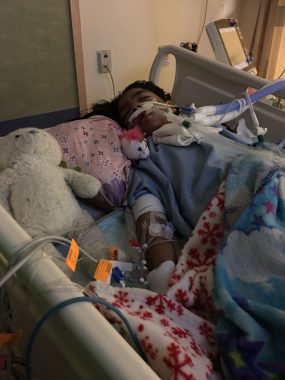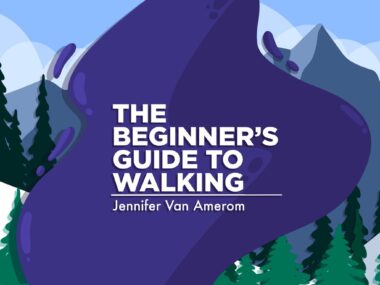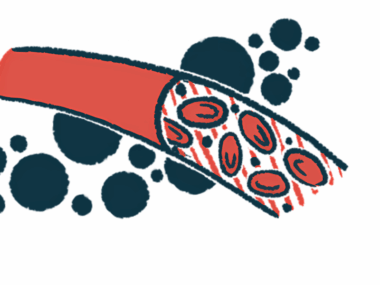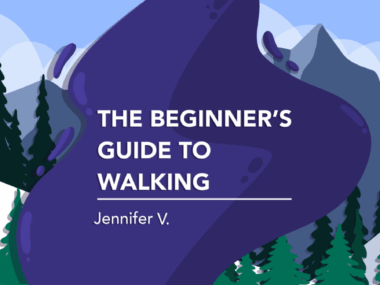My Daughter Continues to Have Worrisome Sleep and Breathing Problems
Written by |

Let’s talk about sleep.
Sleep is essential for everyone, as it allows our bodies to rest and recharge, especially after a long day. According to the Mayo Clinic, adults need seven or more hours of sleep each night, while the recommended amount of sleep for teenagers like my 14-year-old daughter, Bella, is eight to 10 hours per 24 hours.
A good night’s rest not only makes you feel refreshed and ready to take on the day, but it also contributes to improved attention, behavior, and mental and physical health. This is especially important for kids and teenagers who are learning and growing. As the U.S. Centers for Disease Control and Prevention note, lack of sleep has been linked to a number of chronic diseases, including type 2 diabetes, obesity, and depression.
Since Bella was diagnosed with neuromyelitis optica (NMO) in 2017, sleep has been a stressful and worrisome challenge for both of us.
Bella’s sleep challenges began when she was hospitalized with her one and only flare-up in fall 2017. I remember watching Bella sleep as she was intubated in the pediatric intensive care unit. I noticed that she would take two breaths, then stop breathing for 15 seconds. This pattern continued like clockwork until Bella began to wake from deep sleep.

Bella sleeps in her hospital bed during a neuromyelitis optica flare in 2017. (Photo by Candice Galvan)
At the time, Bella’s condition was so grave that every time she stopped breathing, I’d pray she would start again. I was so relieved when her breathing resumed, but I couldn’t — and still don’t — understand why this was happening.
Bella has undergone sleep studies and MRIs in the hope of finding answers. Ultimately, she was diagnosed with sleep apnea and now uses oxygen while sleeping. I’ve spent countless nights praying and watching Bella sleep, just to make sure she starts breathing again after those 15 seconds.
Over time, I was almost certain that Bella’s sleep and breathing patterns were improving. But in March, Bella and I traveled to Boston together, and I realized that her sleep patterns have changed. Once she falls into a deep sleep, she still takes two breaths and then stops breathing for 15 seconds, and that pattern repeats until she wakes up. The difference now is that her entire body will jerk, almost as if it’s trying to wake her up to breathe. Bella will gasp for air, take two breaths, and stop breathing again.
I’ve also noticed that Bella’s fatigue has increased, and she can fall asleep in any setting at any time. Bella should be out running around, roller-skating, and enjoying her final days as a middle schooler with energy left over.
As a parent, seeing the effect NMO has on my daughter is heartbreaking, difficult, and worrisome. My own lack of sleep is resulting in stress, moodiness, and difficulty focusing.
Even though Bella is tired, I’m relieved to see that she’s still enjoying life and having fun. I also find comfort in Bella’s supportive team of doctors, who respond quickly to my concerns about new symptoms.
One of the most important things I have learned during Bella’s NMO journey is to keep a medical journal of her symptoms and their duration, along with questions for doctors. This helps Bella’s team determine next steps, such as which tests need to be done.
Until we know the next step, I will continue to monitor Bella’s sleep and breathing, check on her frequently throughout the night, and make sure we’re both taking time to rest and recharge. Bella’s job is to have fun, live life to the fullest, enjoy her last days of middle school, and take rest breaks when needed.
Note: Neuromyelitis News is strictly a news and information website about the disease. It does not provide medical advice, diagnosis, or treatment. This content is not intended to be a substitute for professional medical advice, diagnosis, or treatment. Always seek the advice of your physician or other qualified health providers with any questions you may have regarding a medical condition. Never disregard professional medical advice or delay in seeking it because of something you have read on this website. The opinions expressed in this column are not those of Neuromyelitis News or its parent company, Bionews, and are intended to spark discussion about issues pertaining to neuromyelitis optica spectrum disorder (NMOSD).







Richard Poulin
Do they check or monitor the neurotransmitter levels? I hope you get more answers soon!